Sprinkler Drip Infiltration Quality Prediction for Moisture Space Distribution Using RSAE-NPSO
Abstract
:1. Introduction
2. Methods and Materials
2.1. SDIQ Indices of Moisture Space Distribution
2.2. Working Mechanism of Regularized Sparse Autoencoder
2.3. Working Mechanism of NPSO Incorporated with RSAE
3. Results and Discussion
3.1. Experiment Preparation
3.2. Experimental Data Measuring
3.3. Intelligent Prediction of SDIQ Indices
3.4. Significant Analysis Using F-Ratio Tests
3.5. Calibration Coefficients of Prediction Error
4. Conclusions
Author Contributions
Funding
Institutional Review Board Statement
Informed Consent Statement
Data Availability Statement
Acknowledgments
Conflicts of Interest
References
- Panahi, M.; Khosravi, K.; Ahmad, S.; Panahi, S.; Lee, C.W. Cumulative infiltration and infiltration rate prediction using optimized deep learning algorithms, A study in Western Iran. J. Hydrol. 2021, 35, 100825. [Google Scholar] [CrossRef]
- Kumar, V.; Thakur, R.K.; Kumar, P. Assessment of heavy metals uptake by cauliflower (Brassica oleracea var. botrytis) grown in integrated industrial effluent irrigated soils, A prediction modeling study. Sci. Hortic. 2019, 257, 108682. [Google Scholar] [CrossRef]
- Luo, Y.; Zhang, J.M.; Zhou, Z.; Shen, Z.J.; Chong, L.; Victor, C. Investigation and prediction of water infiltration process in cracked soils based on a full-scale model test. Geoderma 2021, 400, 115111. [Google Scholar] [CrossRef]
- Pahlavan-Rad, M.M.R.; Dahmardeh, K.; Hadizadeh, M.; Keykha, G.; Brungard, C. Prediction of soil water infiltration using multiple linear regression and random forest in a dry flood plain, eastern Iran. CATENA 2020, 194, 104715. [Google Scholar] [CrossRef]
- Anni, A.H.; Cohen, S.; Praskievicz, S. Sensitivity of urban flood simulations to storm water infrastructure and soil infiltration. J. Hydrol. 2020, 588, 125028. [Google Scholar] [CrossRef]
- Stuurop, J.C.; Sjoerd, E.A.; Helen, K.F. The influence of soil texture and environmental conditions on frozen soil infiltration, A numerical investigation. Cold Reg. Sci. Technol. 2022, 194, 103456. [Google Scholar] [CrossRef]
- Cui, G.; Zhu, J. Prediction of unsaturated flow and water backfill during infiltration in layered soils. J. Hydrol. 2018, 557, 509–521. [Google Scholar] [CrossRef]
- Prima, S.D.; Stewart, R.D.; Castellini, M.; Bagarello, V.; Lassabatere, L. Estimating the macroscopic capillary length from Beerkan infiltration experiments and its impact on saturated soil hydraulic conductivity predictions. J. Hydrol. 2020, 589, 125159. [Google Scholar] [CrossRef]
- Zhang, J.; Li, Y.; Zhao, Y.; Hong, Y. Wavelet-cointegration prediction of irrigation water in the irrigation district. J. Hydrol. 2017, 544, 343–351. [Google Scholar] [CrossRef]
- Qi, W.; Zhang, Z.; Wang, C.; Huang, M. Prediction of infiltration behaviors and evaluation of irrigation efficiency in clay loam soil under Moistube® irrigation. Agric. Water Manag. 2021, 248, 106756. [Google Scholar] [CrossRef]
- González, P.R.; Camacho, P.E.; Montesinos, P.; Rodríguez, D.J.A. Prediction of applied irrigation depths at farm level using artificial intelligence techniques. Agric. Water Manag. 2018, 206, 229–240. [Google Scholar] [CrossRef]
- Yassin, M.A.; Alazba, A.A.; Mattar, M.A. A new predictive model for furrow irrigation infiltration using gene expression programming. Comput. Electron. Agr. 2016, 122, 168–175. [Google Scholar] [CrossRef]
- Mattar, M.A.; Alazba, A.A.; Zin El-Abedin, T.K. Forecasting furrow irrigation infiltration using artificial neural networks. Agric. Water Manag. 2015, 148, 63–71. [Google Scholar] [CrossRef]
- Akbariyeh, S.; Pena, C.; Wang, T.; Mohebbi, A.; Li, Y. Prediction of nitrate accumulation and leaching beneath groundwater irrigated corn fields in the Upper Platte basin under a future climate scenario. Sci. Total Environ. 2019, 685, 514–526. [Google Scholar] [CrossRef] [PubMed]
- Al-Kayssi, A.W.; Mustafa, S.H. Modeling gypsifereous soil infiltration rate under different sprinkler application rates and successive irrigation events. Agric. Water Manag. 2016, 163, 66–74. [Google Scholar] [CrossRef]
- Gillies, M.H.; Smith, R.J.; Raine, S.R. Evaluating whole field irrigation performance using statistical inference of inter-furrow infiltration variation. Biosyst. Eng. 2011, 110, 134–143. [Google Scholar] [CrossRef] [Green Version]
- Fu, Q.; Hou, R.; Li, T.; Li, Y.; Liu, D.; Li, M. A new infiltration model for simulating soil water movement in canal irrigation under laboratory conditions. Agric. Water Manag. 2019, 213, 433–444. [Google Scholar] [CrossRef]
- Khasraei, A.; Zare, H.; Mehdi, A.; Albajic, J.M. Determining the accuracy of different water infiltration models in lands under wheat and bean cultivation. J. Hydrol. 2021, 603, 127122. [Google Scholar] [CrossRef]
- Nie, W.; Li, Y.; Zhang, F.; Ma, X. Optimal discharge for closed-end border irrigation under soil infiltration variability. Agric. Water Manag. 2019, 221, 58–65. [Google Scholar] [CrossRef]
- Jie, F.; Fei, L.; Li, S.; Hao, K.; Liu, L.; Zhu, H. Prediction model for irrigation return flow considering lag effect for arid areas. Agric. Water Manag. 2021, 256, 107119. [Google Scholar] [CrossRef]
- Sayari, S.; Mahdavi-Meymand, A.; Zounemat-Kermani, M. Irrigation water infiltration modeling using machine learning. Comput. Electron. Agr. 2021, 180, 105921. [Google Scholar] [CrossRef]
- Sengupta, S.; Bhattacharyy, K.; Mandal, J.; Bhattacharya, P.; Halder, S.; Pari, A. Deficit irrigation and organic amendments can reduce dietary arsenic risk from rice, Introducing machine learning-based prediction models from field data. Agric. Ecosyst. Environ. 2021, 319, 107516. [Google Scholar] [CrossRef]
- Hamilton, G.J.; Akbar, G.; Raine, S.; Mchugh, A. Deep blade loosening and two-dimensional infiltration theory make furrow irrigation predictable, simpler and more efficient. Agric. Water Manag. 2020, 239, 106241. [Google Scholar] [CrossRef]
- Mondaca-Duarte, F.D.; Mourik, S.V.; Balendonck, J.; Voogt, W.; Henten, J. Irrigation, crop stress and drainage reduction under uncertainty, A scenario study. Agric. Water Manag. 2020, 230, 105990. [Google Scholar] [CrossRef]
- Sun, M.; Gao, X.; Zhang, Y.; Song, X.; Zhao, X. A new solution of high-efficiency rainwater irrigation mode for water management in apple plantation, Design and application. Agric. Water Manag. 2022, 259, 107243. [Google Scholar] [CrossRef]
- Hale, L.; Curtis, D.; Azeem, M.; Montgomery, J.; Crowley, D.E.; McGiffen, M.E. Influence of compost and biochar on soil biological properties under turfgrass supplied deficit irrigation. Appl. Soil Ecol. 2021, 168, 104134. [Google Scholar] [CrossRef]
- Chari, M.M.; Poozan, M.T.; Afrasia, P. Modelling soil water infiltration variability using scaling. Biosyst. Eng. 2020, 196, 56–66. [Google Scholar] [CrossRef]
- Yang, X.; Wang, G.; Chen, Y.; Sui, P.; Pacenka, S.; Steenhuis, T.S.; Siddique, K. Reduced groundwater use and increased grain production by optimized irrigation scheduling in winter wheat–summer maize double cropping system—A 16-year field study in North China Plain. Field Crops Res. 2022, 275, 108364. [Google Scholar] [CrossRef]
- Lena, B.P.; Bondesan, L.; Pinheiro, A.; Ortiz, B.V.; Morata, G.T.; Kumar, H. Determination of irrigation scheduling thresholds based on HYDRUS-1D simulations of field capacity for multi-layered agronomic soils in Alabama, USA. Agric. Water Manag. 2022, 259, 107234. [Google Scholar] [CrossRef]
- Wang, J.; Long, H.; Huang, Y.; Wang, X.; Liu, W. Effects of different irrigation management parameters on cumulative water supply under negative pressure irrigation. Agric. Water Manag. 2019, 224, 105743. [Google Scholar] [CrossRef]
- Li, M.; Sui, R.; Meng, Y.; Yan, H. A real-time fuzzy decision support system for alfalfa irrigation. Comput. Electron. Agric. 2019, 163, 104870. [Google Scholar] [CrossRef]
- Yu, Q.; Kang, S.; Hu, S.; Zhang, L.; Zhang, X. Modeling soil water-salt dynamics and crop response under severely saline condition using WAVES, Searching for a target irrigation for saline water irrigation. Agric. Water Manag. 2021, 256, 107100. [Google Scholar] [CrossRef]
- Mairech, H.; López-Bernal, L.; Moriondo, M.; Dibari, C.; Testi, L. Sustainability of olive growing in the Mediterranean area under future climate scenarios, Exploring the effects of intensification and deficit irrigation. Eur. J. Agron. 2021, 129, 126319. [Google Scholar] [CrossRef]
- Thorp, K.R.; Thompson, A.L.; Bronson, K.F.; Clothier, B.E.; Dierickx, W.; Oster, J.; Wichelns, D. Irrigation rate and timing effects on Arizona cotton yield, water productivity, and fiber quality. Agric. Water Manag. 2020, 234, 106146. [Google Scholar] [CrossRef]
- Yalin, D.; Schwartz, A.; Tarchitzky, J.; Shenker, M. Soil oxygen and water dynamics underlying hypoxic conditions in the root-zone of avocado irrigated with treated wastewater in clay soil. Soil Till. Res. 2021, 212, 105039. [Google Scholar] [CrossRef]
- Salah, E.B.; Foued, C. Irrigation problem in Ziban oases (Algeria), causes and consequences. Environ. Dev. Sustain. 2018, 5, 1–14. [Google Scholar]
- Choi, K.; Choi, E.; Kim, S.; Lee, Y. Improving water and fertilizer use efficiency during the production of strawberry in coir substrate hydroponics using a FDR sensor-automated irrigation system. Hortic. Environ. Biotechnol. 2016, 57, 431–439. [Google Scholar] [CrossRef]
- Nam, W.; Hong, E.; Choi, J. Assessment of water delivery efficiency in irrigation canals using performance indicators. Irrig. Sci. 2016, 34, 129–143. [Google Scholar] [CrossRef]
- Liang, Z.; Liu, X.; Xiao, J.; Liu, C. Review of conceptual and systematic progress of precision irrigation. Int. J. Agric. Biol Eng. 2021, 14, 20–31. [Google Scholar] [CrossRef]
- Fernández, G.; Montesinos, P.; Camacho, P.; Rodríguez, D. Optimal design of pressurized irrigation networks to minimize the operational cost under different management scenarios. Water Res. Manag. 2017, 31, 1995–2010. [Google Scholar] [CrossRef]
- Nagarajan, G.; Minu, R.I. Wireless Soil Monitoring Sensor for sprinkler drip irrigation Automation System. Wireless Pers. Commun. 2018, 98, 1835–1851. [Google Scholar] [CrossRef]
- Machiwal, D.; Gupta, A.; Jha, M.K.; Kamble, T. Analysis of trend in temperature and rainfall time series of an Indian arid region, comparative evaluation of salient techniques. Theor. Appl. Climatol. 2019, 136, 301–320. [Google Scholar] [CrossRef]
- Feng, G.; Ouyang, Y.; Adeli, A.; Read, J.; Jenkins, J. Rainfall deficit and irrigation demand for major row crops in the Blackland Prairie of Mississippi. Soil Sci. Soc. Am. J. 2018, 82, 423–435. [Google Scholar] [CrossRef]
- Yahyaoui, I.; Tadeo, F.; Segatto, M.V. Energy and water management for drip-irrigation of tomatoes in a semi-arid district. Agric. Water Manag. 2017, 183, 4–15. [Google Scholar] [CrossRef]
- Liu, X.; Liang, Z.; Wen, G.; Yuan, X. Waterjet irrigation and research developments, a review. Int. J. Adv. Manuf. Technol. 2018, 102, 1257–1335. [Google Scholar] [CrossRef]
- Liang, Z.; Liao, S.; Wen, Y.; Liu, X. Working parameter optimization of strengthen waterjet grinding with the orthogonal-experiment-design-based ANFIS. J. Intell. Manuf. 2019, 30, 833–854. [Google Scholar] [CrossRef]
- Susan, A.O.; Manuel, A.A.; Steven, R.E. Using an integrated crop water stress index for irrigation scheduling of two corn hybrids in a semi-arid region. Irrig. Sci. 2017, 35, 451–467. [Google Scholar]
- Liang, Z.; Liu, X.; Wen, G.; Xiao, J. Effectiveness prediction of abrasive jetting stream of accelerator tank using normalized sparse autoencoder-adaptive neural fuzzy inference system. Proc. Inst. Mech. Eng. Part B J. Eng. Manuf. 2020, 234, 1615–1639. [Google Scholar] [CrossRef]
- Cao, X.; Shu, R.; Guo, X.; Wang, W. Scarce water resources and priority irrigation schemes from agronomic crops. Mitig. Adapt. Strateg. Glob. Chang. 2019, 24, 399–417. [Google Scholar] [CrossRef]
- Sayyed-Hassan, T.; Rohollah, F.N.; Payam, N.; Mohammad, M.K.; Zohreh, N. Comparison of traditional and modern precise deficit irrigation techniques in corn cultivation using treated municipal Waste water. Int. J. Recycl. Org. Waste Agric. 2017, 6, 47–55. [Google Scholar]
- Hodgkinson, L.; Dodd, I.C.; Binley, A.; Ashton, R.W.; White, R.P.; Watts, C.W.; Whalley, W.R. Root growth in field-grown winter wheat, some effects of soil conditions, season and genotype. Eur. J. Agron. 2017, 91, 74–83. [Google Scholar] [CrossRef] [PubMed]
- Biplab, M.; Gour, D.; Sujan, S. Land suitability assessment for potential surface irrigation of river catchment for irrigation development in Kansai watershed, Purulia, West Bengal, India. Sustain. Water Resour. Manag. 2018, 4, 699–714. [Google Scholar]
- Mérida, G.A.; Fernández, G.I.; Camacho, P.E.; Montesinos, B.P.; Rodríguez, D.A. Coupling irrigation scheduling with solar energy production in a smart irrigation management system. J. Clean. Prod. 2018, 175, 670–682. [Google Scholar] [CrossRef]
- Surjeet, S.; Ghosh, N.C.; Suman, G.; Gopal, K.; Sumant, K.; Preeti, B. Index-based assessment of suitability of water quality for irrigation purpose under Indian conditions. Environ. Monit. Assess. 2018, 190, 29. [Google Scholar]
- Pulido-Bosch, A.; Rigol-Sanchez, J.P.; Vallejos, A.; Andreu, J.M.; Ceron, J.C.; Molina-Sanchez, L.; Sola, F. Impacts of agricultural irrigation on groundwater salinity. Environ. Earth Sci. 2018, 77, 197. [Google Scholar] [CrossRef] [Green Version]
- Zhang, X.; Sun, M.; Wang, N.; Huo, Z.; Huan, G. Risk assessment of shallow groundwater contamination under irrigation and fertilization conditions. Environ. Earth Sci. 2016, 75, 603. [Google Scholar] [CrossRef]
- Liang, Z.; Tan, S.; Liao, S.; Liu, X. Component parameter optimization of strengthen waterjet grinding slurry with the orthogonal-experiment-design-based ANFIS. Int. J. Adv. Manuf. Technol. 2016, 90, 1–25. [Google Scholar] [CrossRef]
- Liang, Z.; Liu, X.; Zou, T.; Xiao, J. Adaptive prediction of water drip infiltration effectiveness of sprinkler drip irrigation using Regularized Sparse Autoencoder–Adaptive Network-Based Fuzzy Inference System (RSAE–ANFIS). Water 2021, 13, 791. [Google Scholar] [CrossRef]
- Zhongwei, L.; Shiyin, S.; Xiaochu, L.; Yiheng, W. Fuzzy prediction of AWJ turbulence characteristics by using multi-phase flow models. Eng. Appl. Comp. Fluid 2017, 11, 225–257. [Google Scholar]
- Yousef, E.; Chris, P. Optimally heterogeneous irrigation for precision agriculture using wireless sensor networks. Arab. J. Sci. Eng. 2019, 44, 3183–3195. [Google Scholar]
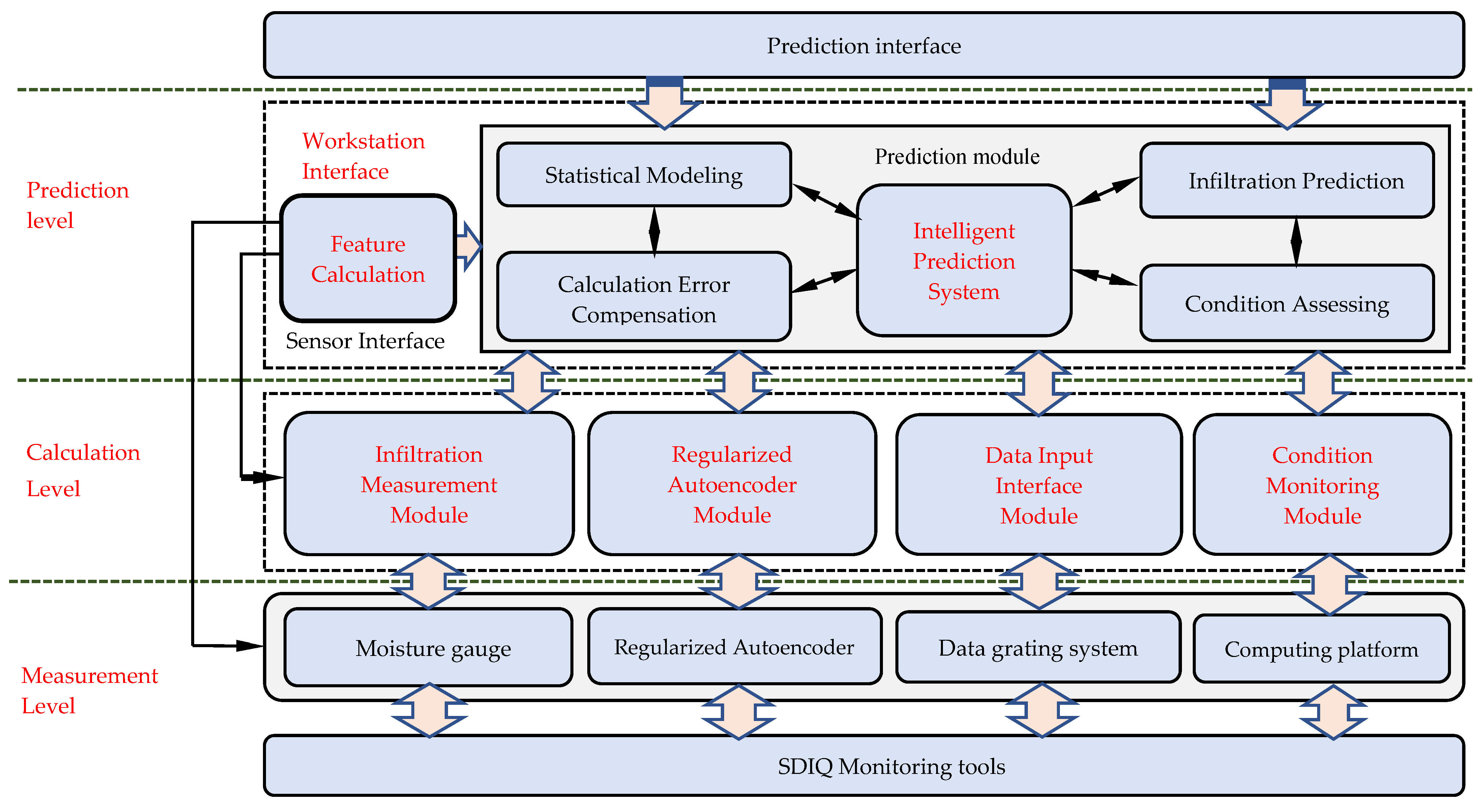
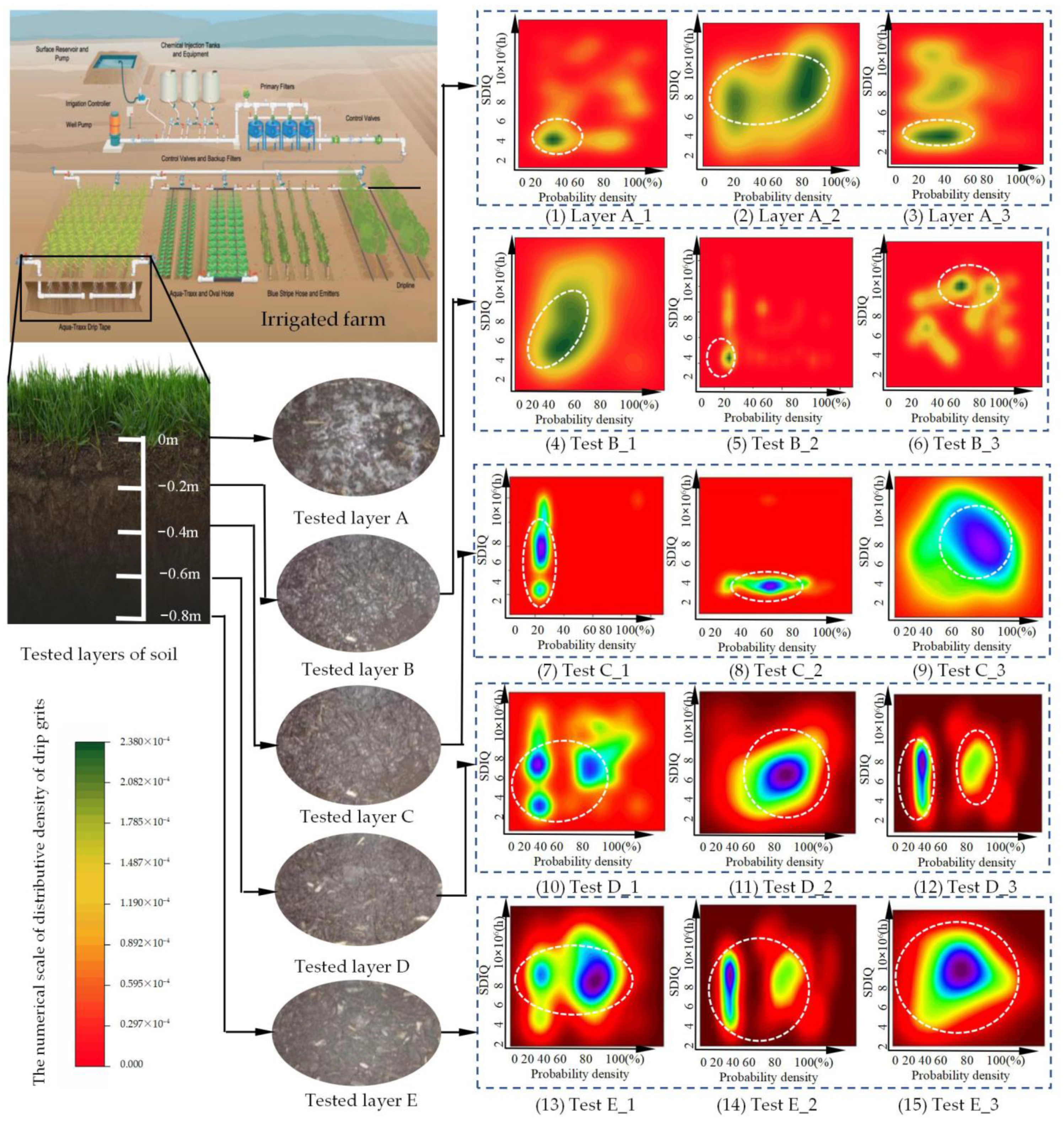



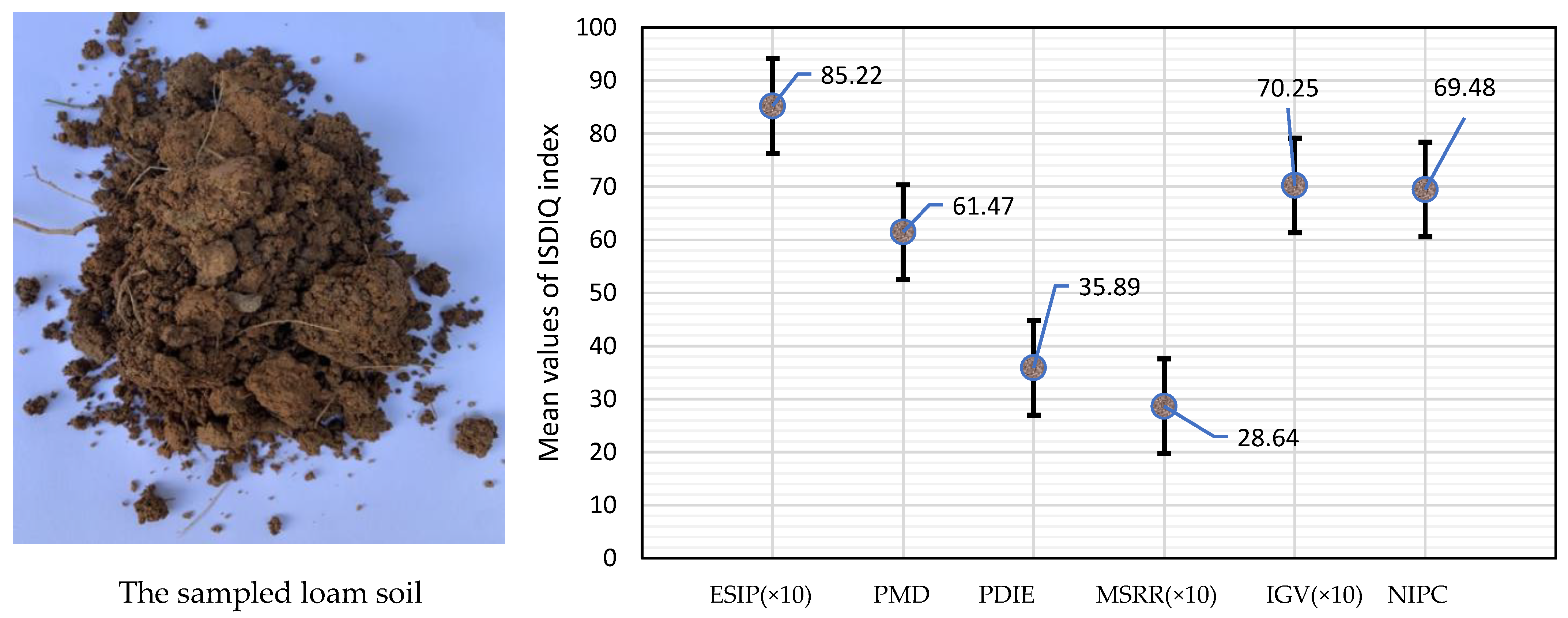
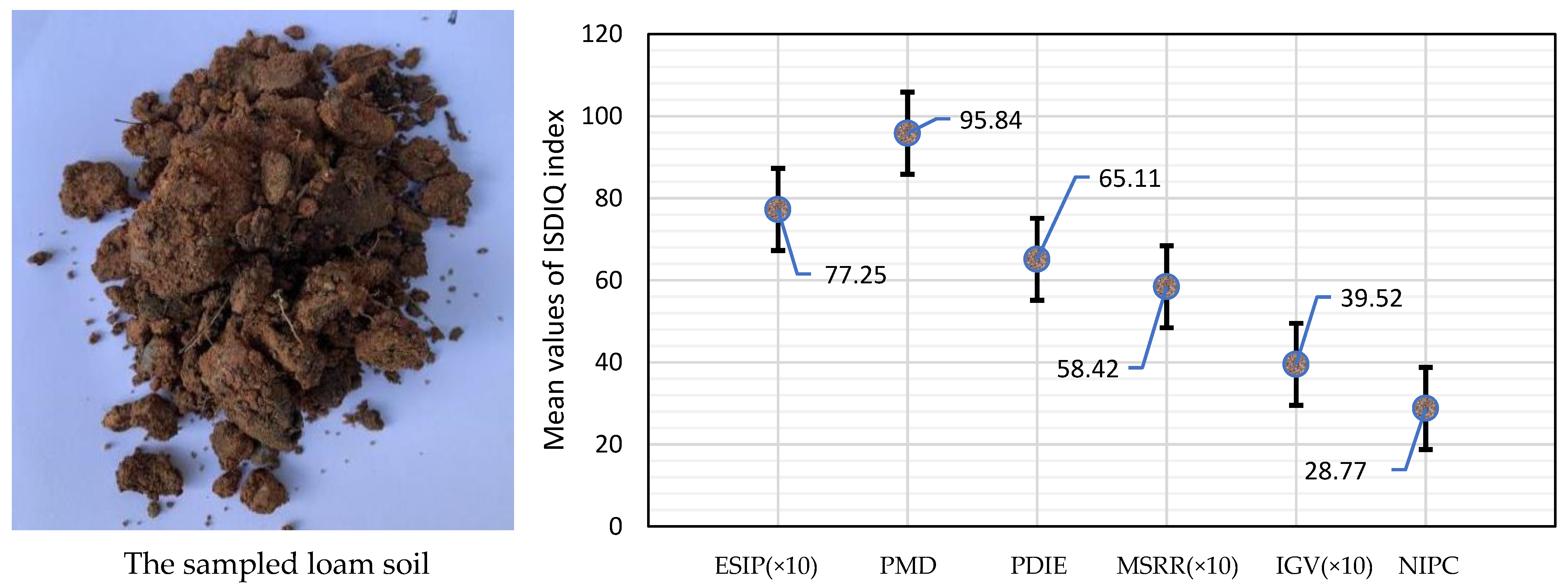
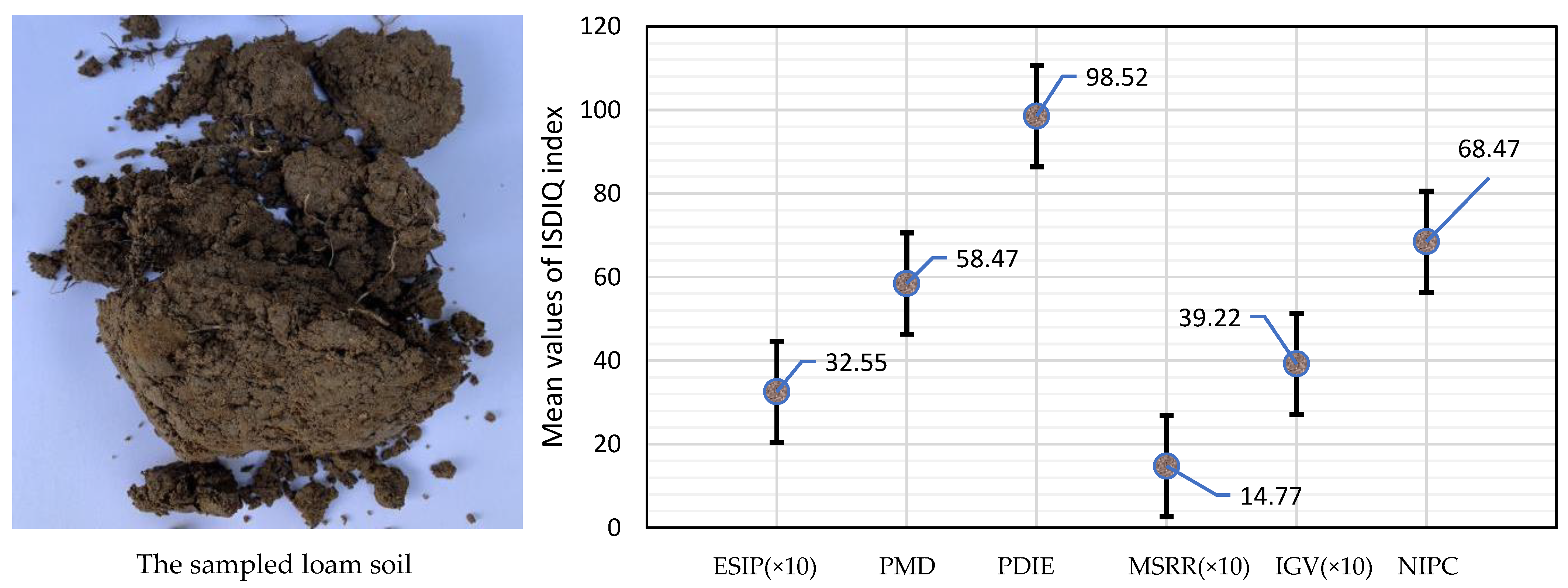
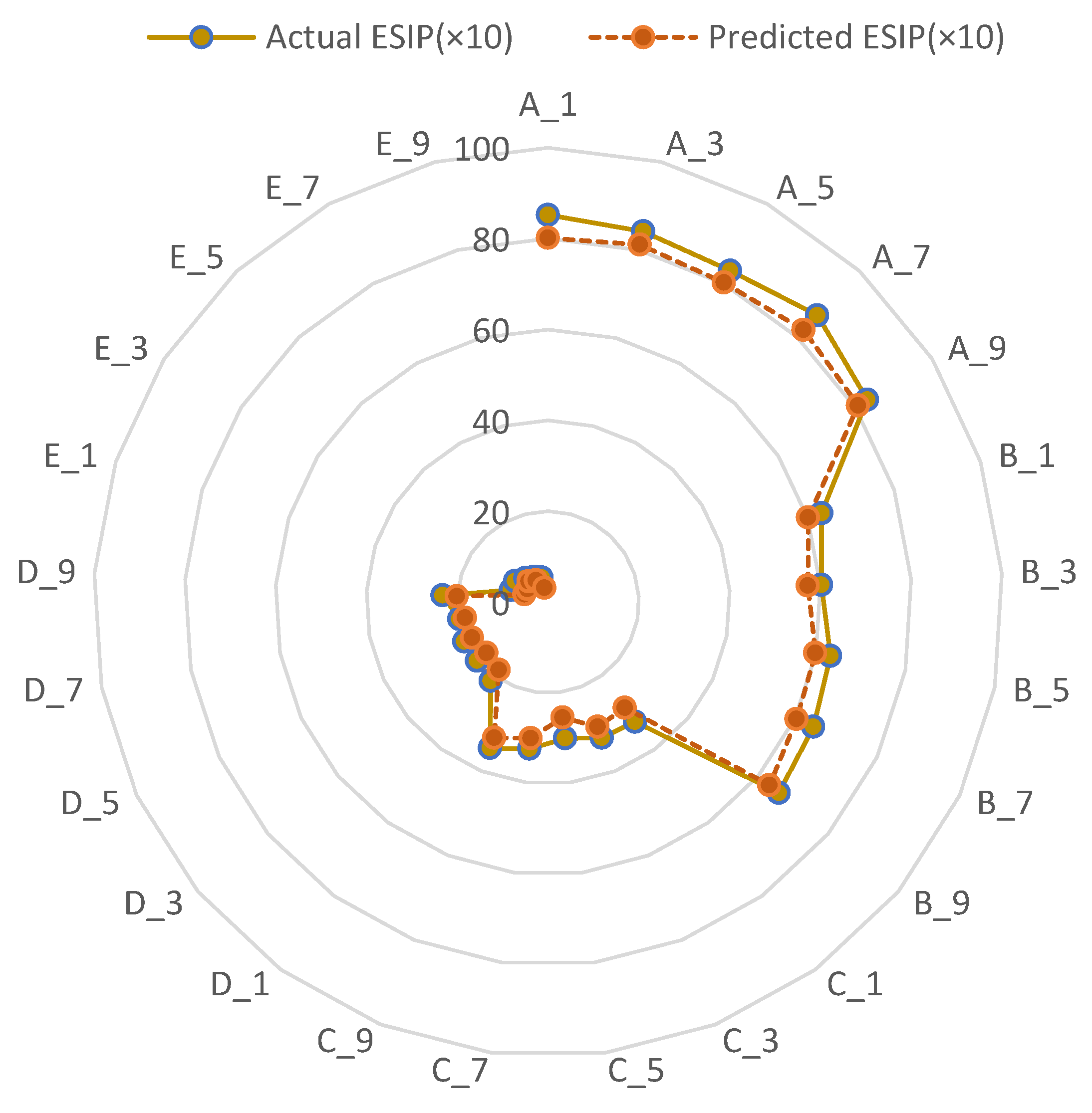
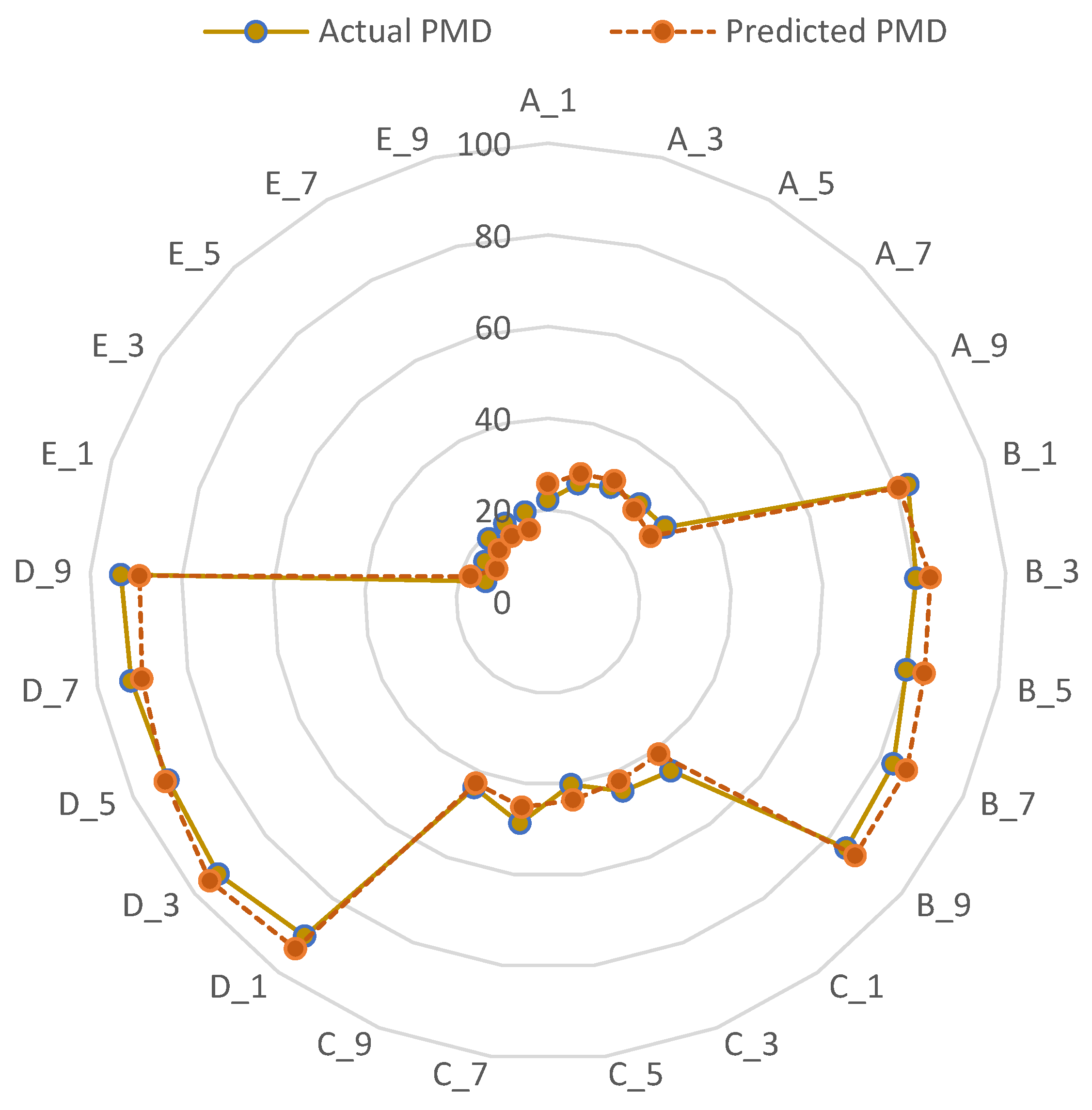

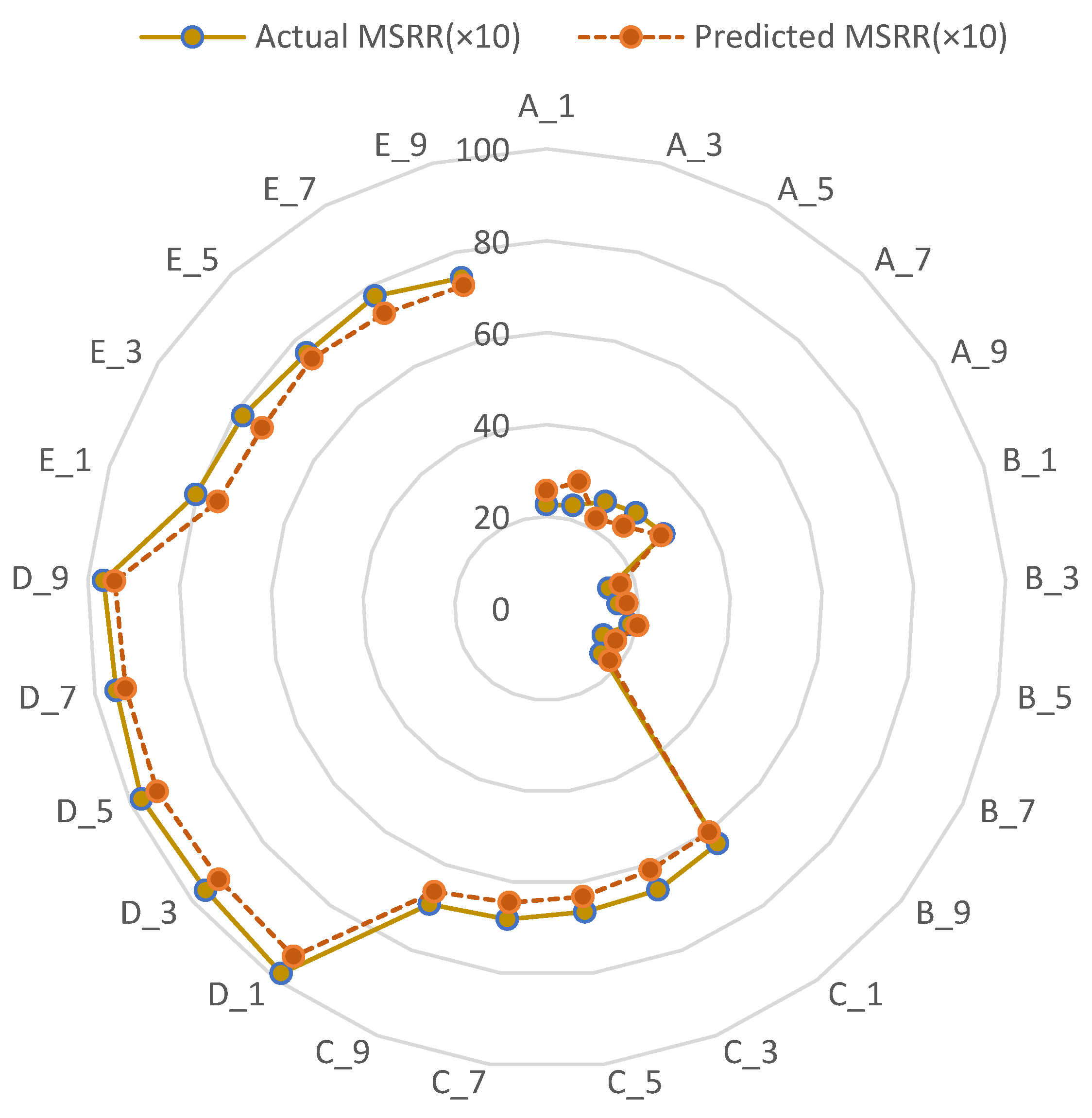
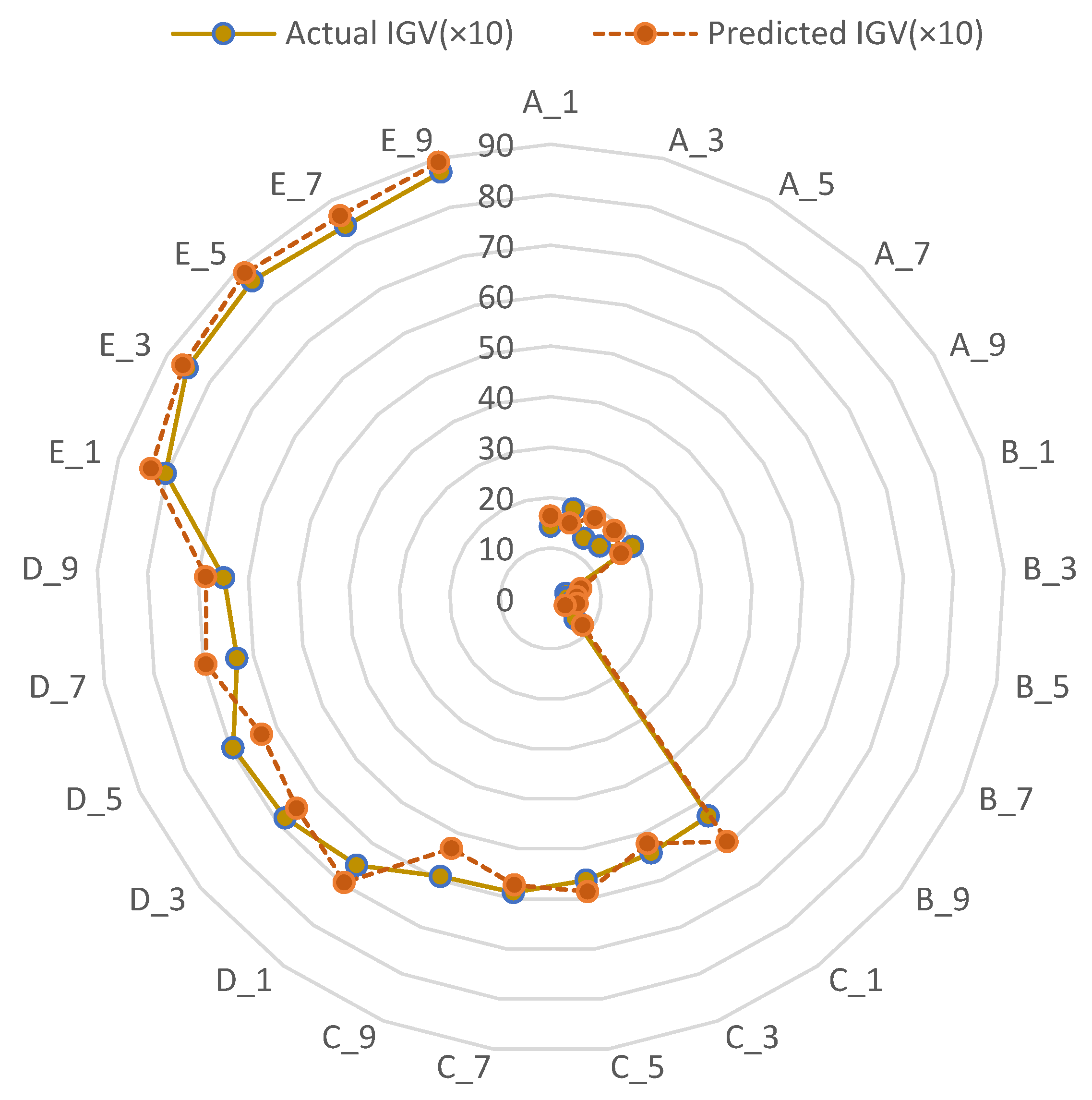
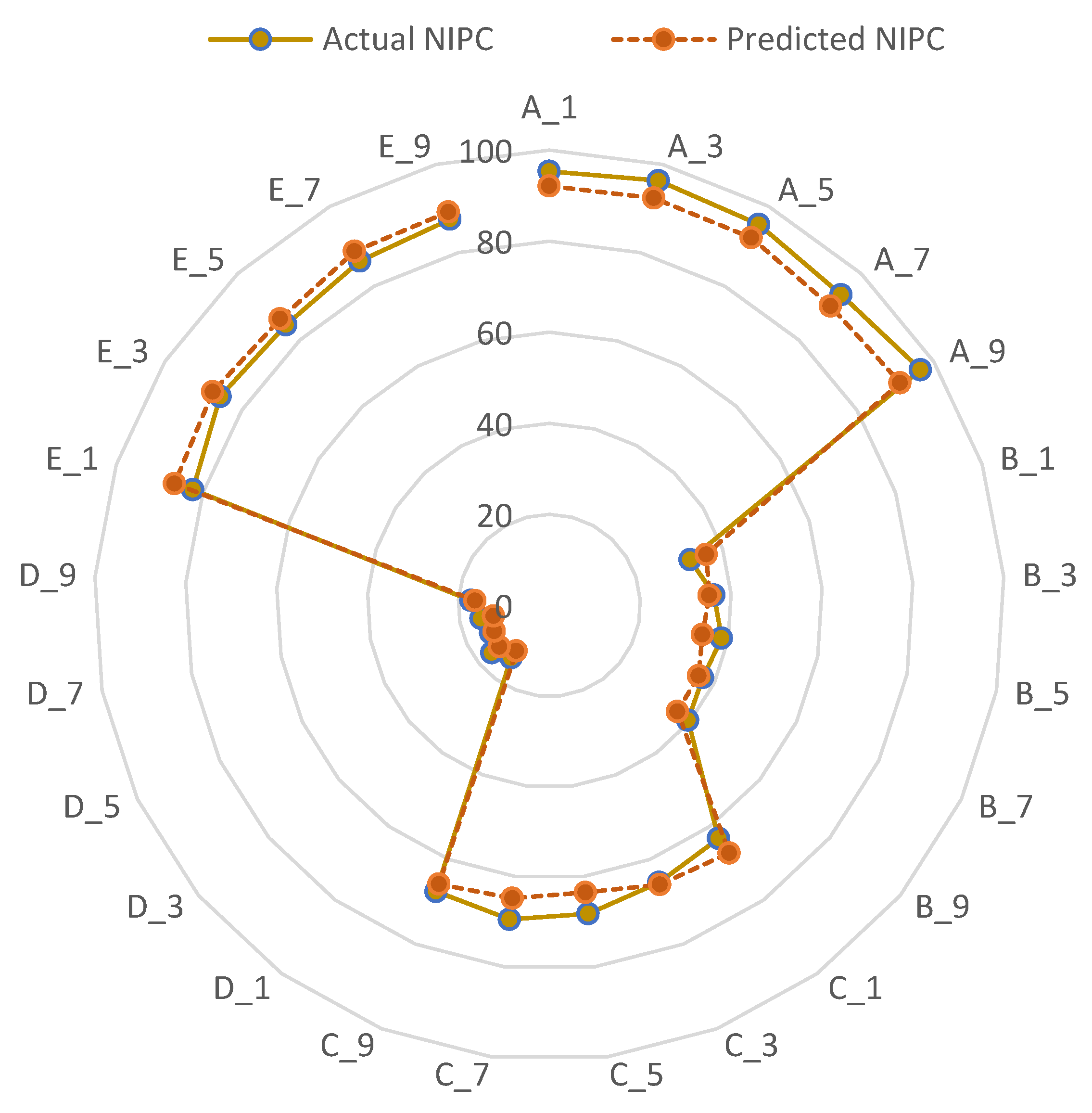
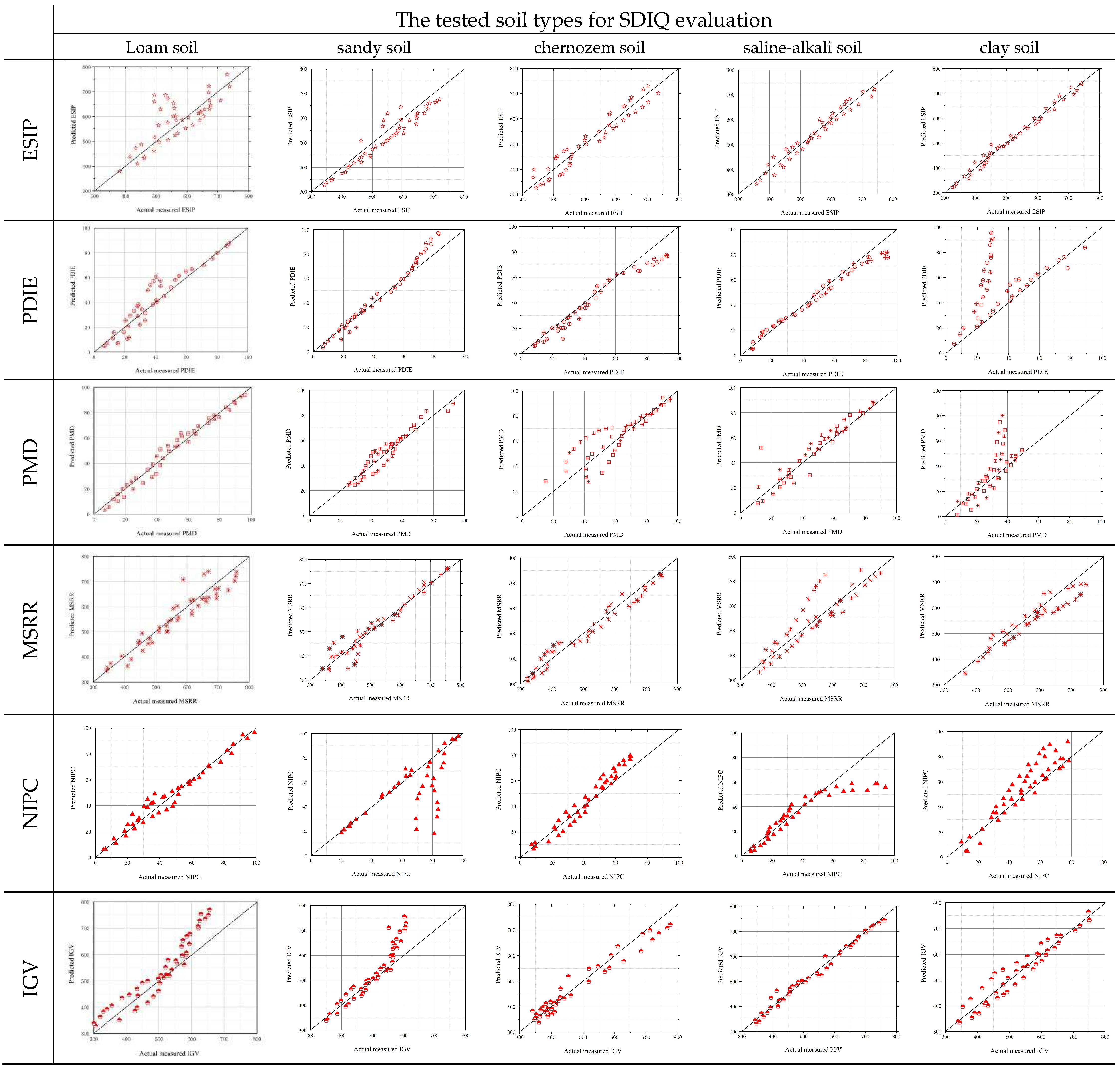
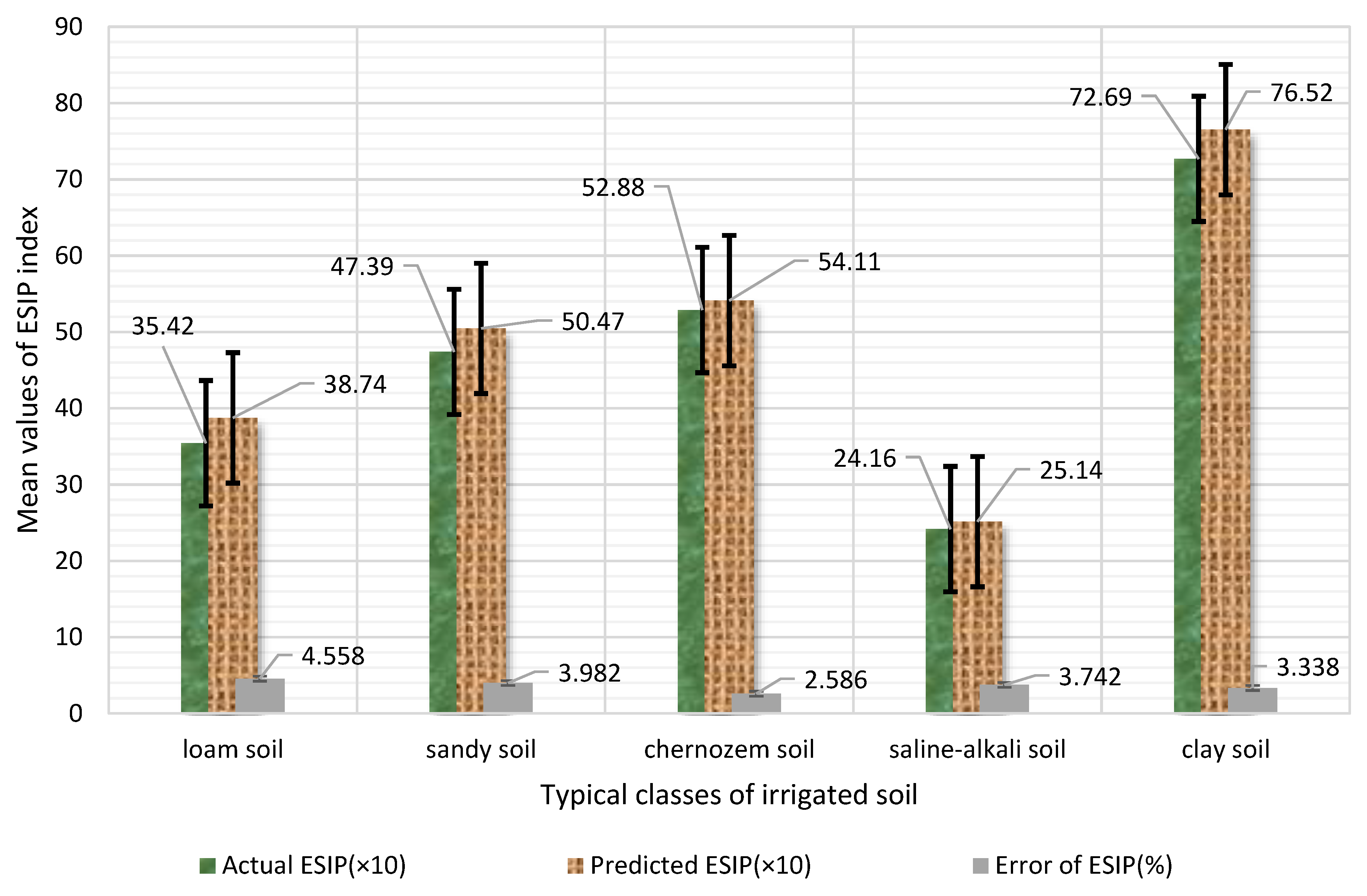

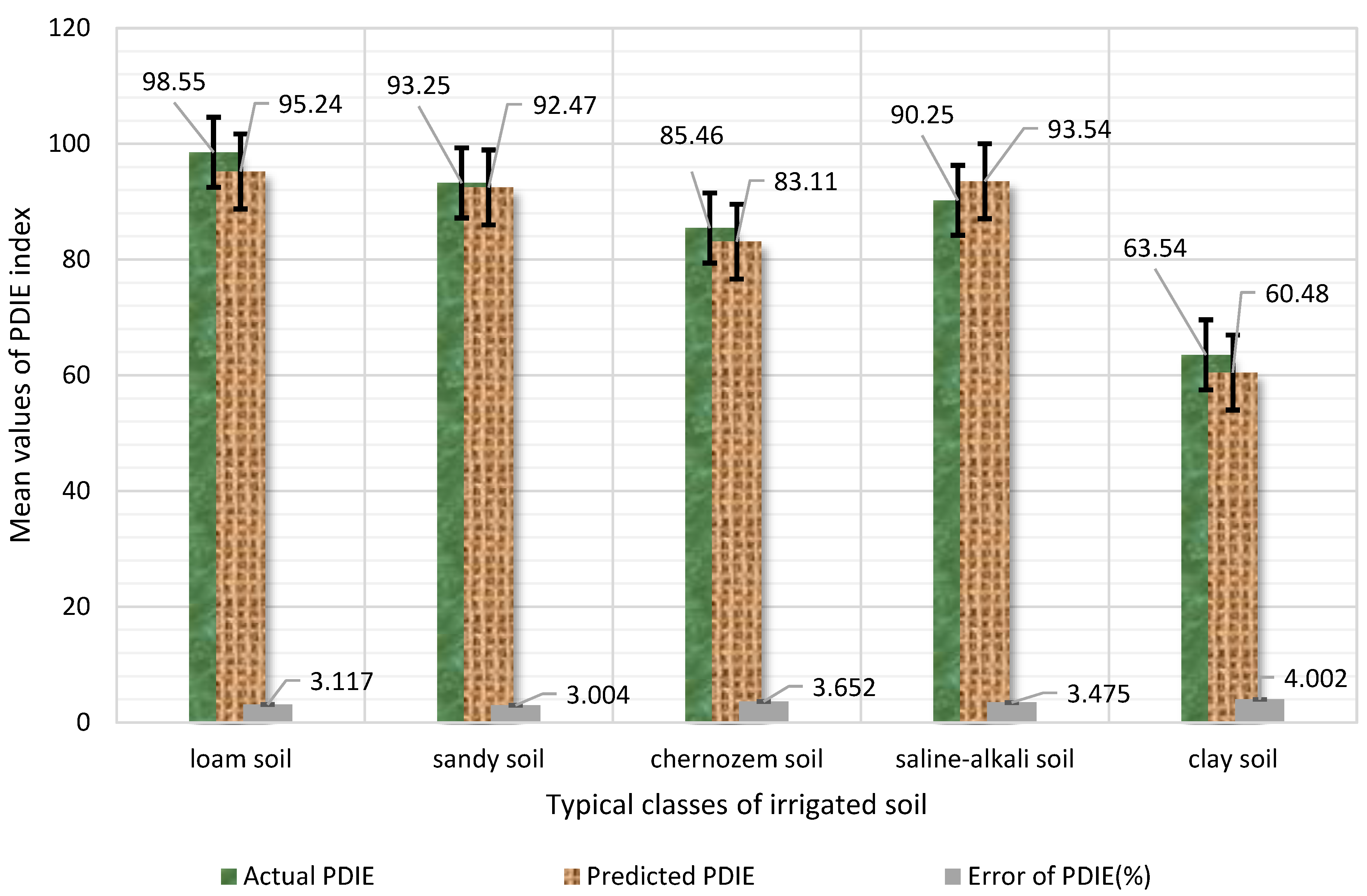
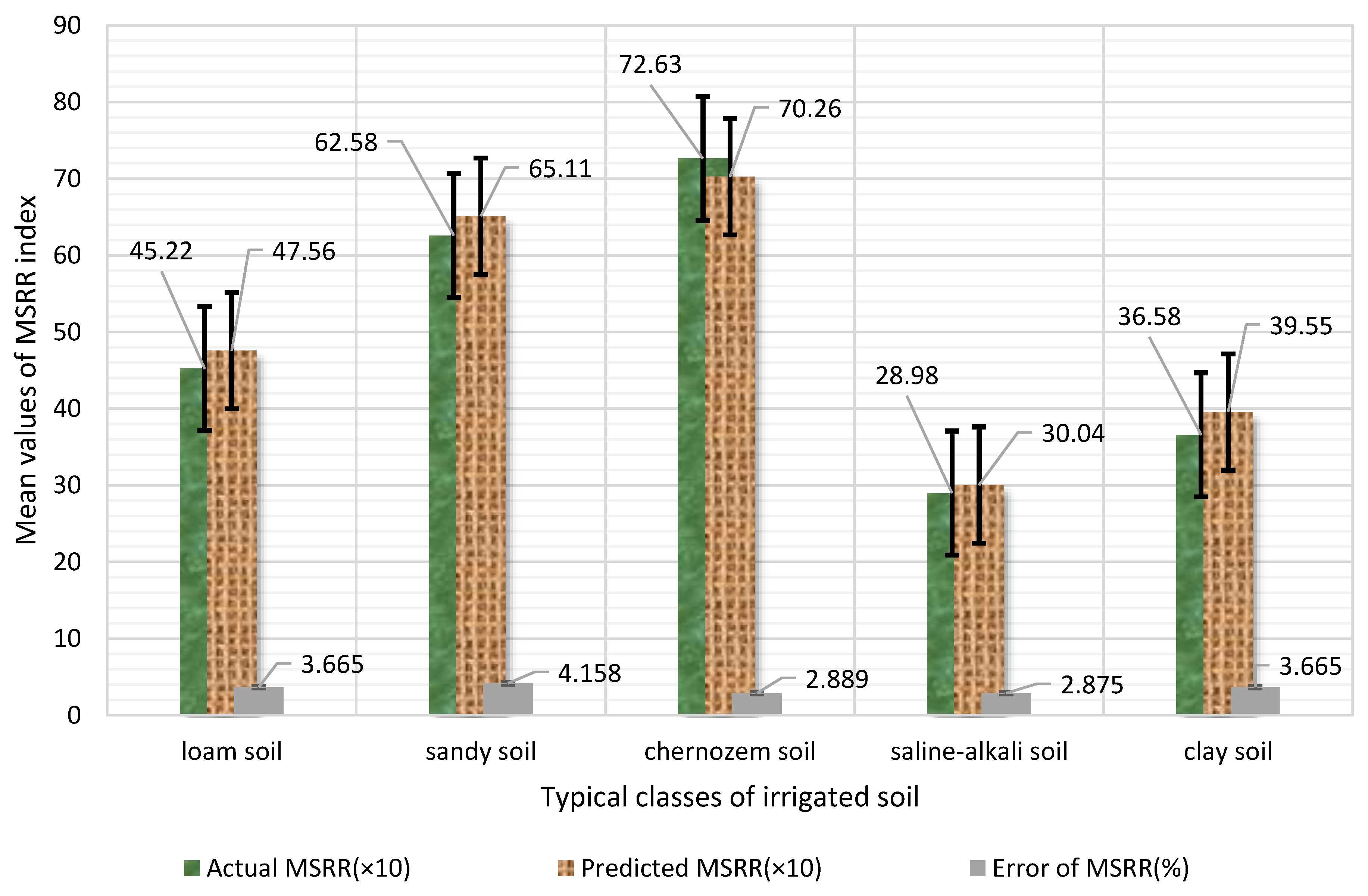
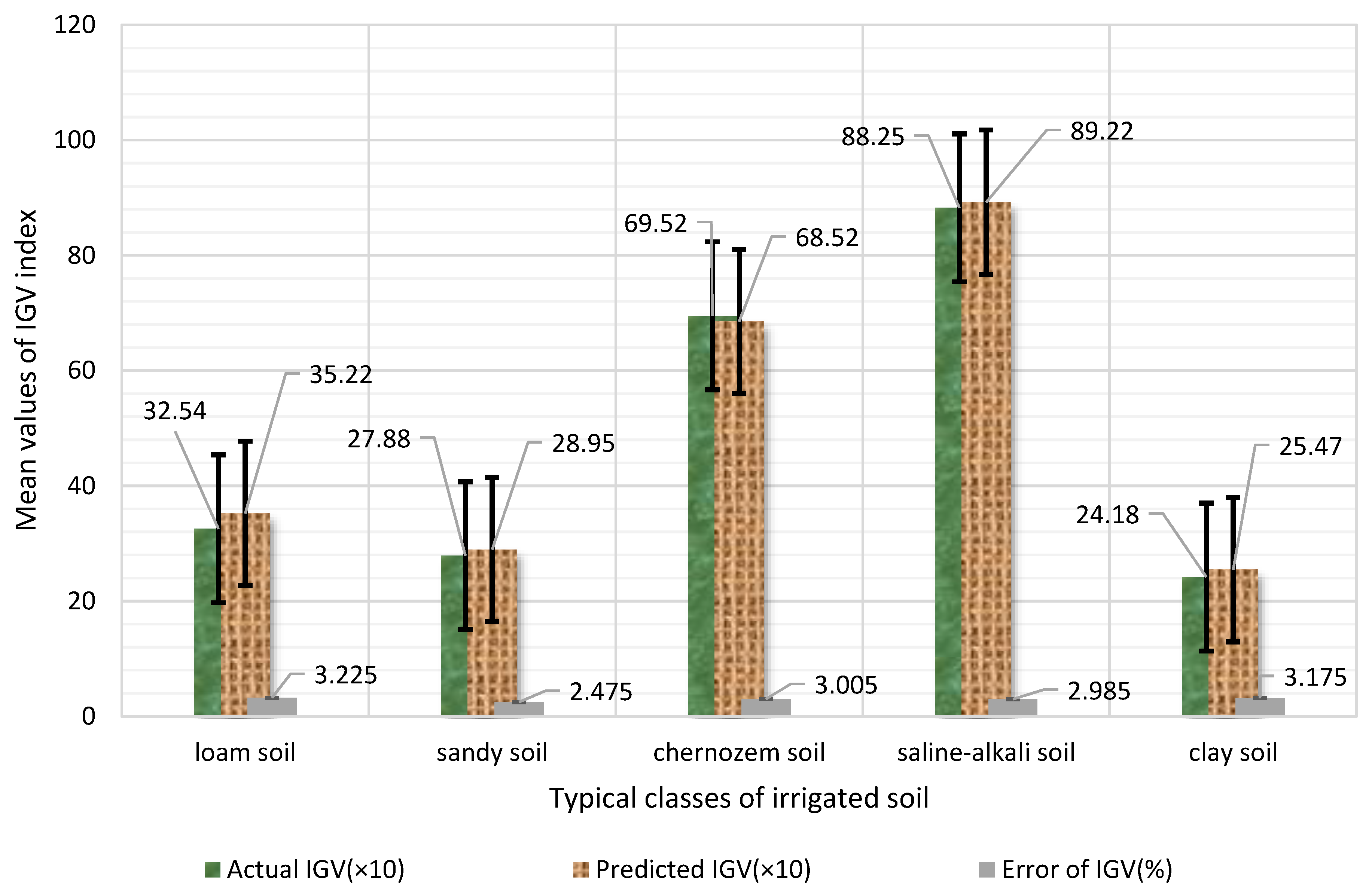
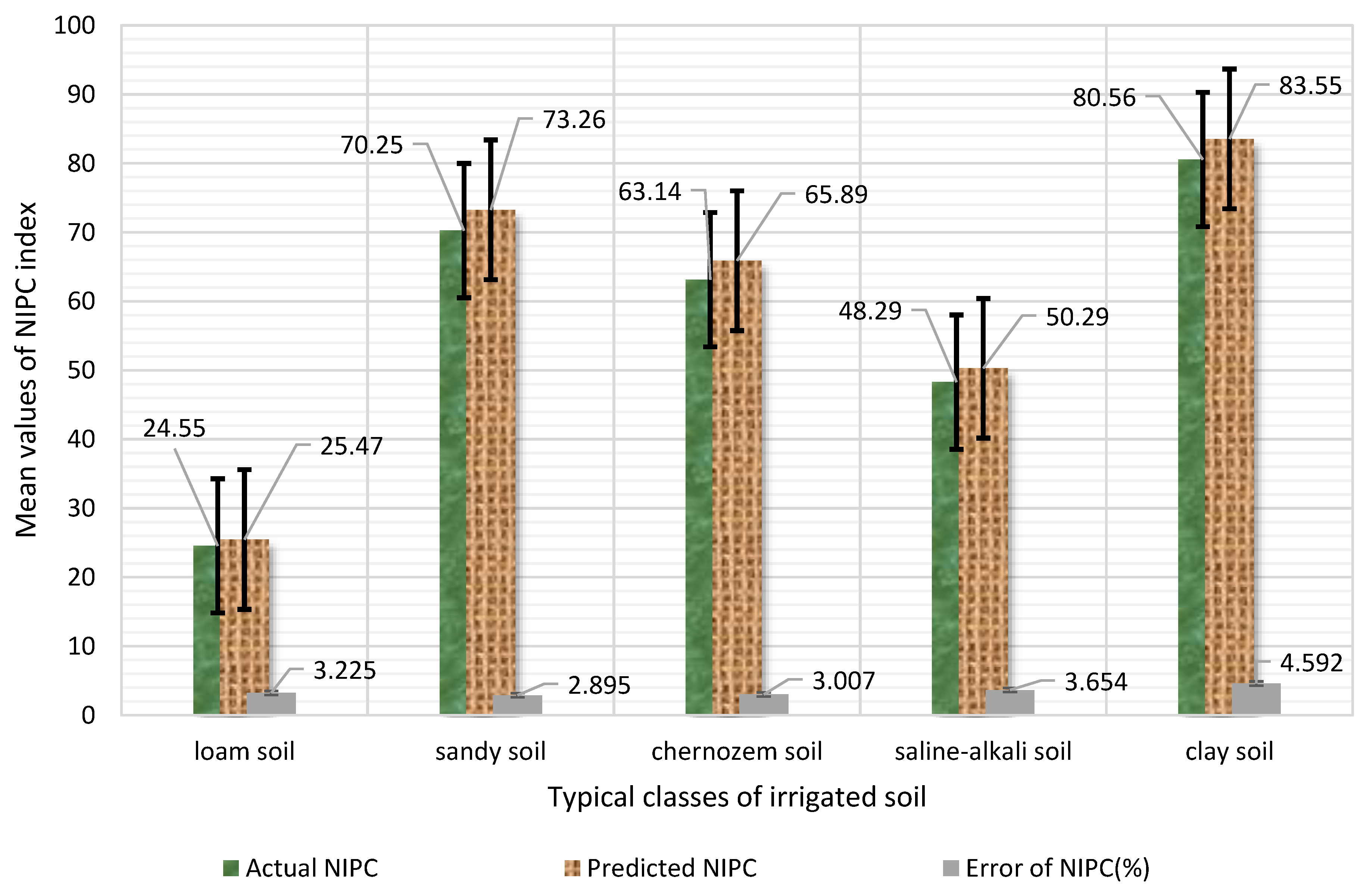
| Condition | Initial Positions | Initial Velocities | pBestik | Level |
|---|---|---|---|---|
| Initial particle | Level 1 (Measurement Level) | |||
| fobjki(Xi) | Level 2 (Calculation Level) | |||
| Objective function (Quasi-Monte Carlo simulation) | Above, ε1, ε2, ε3, ε4, and ε5 are the weight coefficients meeting different irrigation accuracy requirement of γ0, rc, is rake profile, and φ is rear profile. | Level 3 (Prediction level) | ||
| Penalty function: | ; Nfxi is the inertia weight factor. c1 and c2 denote the local learning factor and the global learning factor, respectively. r1 and r2 are the random numbers in the range of (0, 1). vki and xki denote the position and velocity vector of particle i at the kth iteration, respectively. | |||
| Soil Type | The Physical and Chemical Properties (Error Tolerance = ±5%) | ||||||
|---|---|---|---|---|---|---|---|
| pH Value | Electrical Conductivity (ECe) (dS/m) | Average Volumetric Moisture Content (%) | Wilting Point (%) | Organic Content (g/kg) | Nitrogen Content (mg/kg) | Mean Bulk Density (g/cm3) | |
| loam | 6.624 | 0.143 | 40.44 | 28.93 | 22.601 | 1.68 | 1.354 |
| sandy | 6.672 | 0.152 | 42.43 | 29.94 | 24.113 | 1.72 | 1.441 |
| Chernozem | 6.782 | 0.182 | 41.46 | 30.43 | 23.841 | 1.58 | 1.389 |
| Saline–alkali | 6.651 | 0.167 | 39.77 | 31.21 | 22.467 | 1.64 | 1.522 |
| Clay | 6.722 | 0.149 | 38.98 | 29.98 | 23.903 | 1.66 | 1.55 |
| Factor Level | Pw/ KPa | Id/ h | Fq/ L/h | Sr/ MJ/m2 | Aw/ m/s | At/ °C | Ah/% | Sb/ g/cm3 | Sp/% | Oc/% | St/ ×10−6 | Ev/ mm/h | Ss/ cm/s | Sc/ % | Sw/% | Wd |
|---|---|---|---|---|---|---|---|---|---|---|---|---|---|---|---|---|
| 1 | 210 | 2.1 | 1100 | 11 | 0.1 | 10 | 60 | 1.0 | 30 | 40 | 2.0 | 20 | 1.0 | 0.23 | 30 | Northeast |
| 2 | 220 | 2.2 | 1200 | 12 | 0.3 | 12 | 62 | 1.1 | 35 | 43 | 2.6 | 22 | 1.5 | 0.26 | 35 | Southeast |
| 3 | 230 | 2.3 | 1300 | 13 | 0.5 | 14 | 64 | 1.2 | 40 | 46 | 3.2 | 24 | 2.0 | 0.29 | 40 | West |
| 4 | 240 | 2.4 | 1400 | 14 | 0.7 | 16 | 66 | 1.3 | 45 | 49 | 3.8 | 26 | 2.5 | 0.32 | 45 | Northwest |
| 5 | 250 | 2.5 | 1500 | 15 | 0.9 | 18 | 68 | 1.4 | 50 | 52 | 4.4 | 28 | 3.0 | 0.35 | 50 | North |
| 6 | 260 | 2.6 | 1600 | 16 | 1.1 | 20 | 70 | 1.5 | 55 | 55 | 5.0 | 30 | 3.5 | 0.38 | 55 | South |
| 7 | 270 | 2.7 | 1700 | 17 | 1.3 | 22 | 72 | 1.6 | 60 | 58 | 5.6 | 32 | 4.0 | 0.44 | 60 | Southwest |
| 8 | 280 | 2.8 | 1800 | 18 | 1.5 | 24 | 74 | 1.7 | 65 | 61 | 6.2 | 34 | 4.5 | 0.47 | 65 | East |
| 9 | 290 | 2.9 | 1900 | 19 | 1.7 | 26 | 76 | 1.8 | 70 | 64 | 6.8 | 36 | 5.0 | 0.50 | 70 | North/Northwest |
| 10 | 300 | 3.0 | 2000 | 20 | 1.9 | 28 | 78 | 1.9 | 75 | 67 | 7.4 | 38 | 5.5 | 0.53 | 75 | Southwest/West |
| Test | Pw | Id | Fq | Sr | Aw | At | Ah | Sb | Sp | Oc | St | Ev | Ss | Sc | Sw | Wd |
|---|---|---|---|---|---|---|---|---|---|---|---|---|---|---|---|---|
| A_1 | 5 | 4 | 8 | 8 | 6 | 6 | 8 | 9 | 8 | 9 | 8 | 9 | 8 | 8 | 8 | 8 |
| A_2 | 3 | 2 | 2 | 5 | 2 | 6 | 7 | 8 | 9 | 6 | 9 | 6 | 8 | 9 | 9 | 5 |
| A_3 | 2 | 8 | 5 | 2 | 3 | 3 | 5 | 9 | 5 | 5 | 6 | 8 | 5 | 5 | 5 | 4 |
| A_4 | 1 | 6 | 6 | 3 | 5 | 2 | 4 | 6 | 2 | 2 | 5 | 5 | 4 | 2 | 1 | 8 |
| A_5 | 8 | 2 | 5 | 6 | 4 | 5 | 2 | 3 | 1 | 10 | 8 | 2 | 2 | 3 | 2 | 9 |
| Test | Pw | Id | Fq | Sr | Aw | At | Ah | Sb | Sp | Oc | St | Ev | Ss | Sc | Sw | Wd |
|---|---|---|---|---|---|---|---|---|---|---|---|---|---|---|---|---|
| B_1 | 7 | 7 | 8 | 8 | 8 | 8 | 8 | 9 | 8 | 8 | 8 | 10 | 8 | 8 | 8 | 8 |
| B_2 | 5 | 9 | 5 | 5 | 5 | 6 | 5 | 6 | 5 | 8 | 5 | 8 | 5 | 6 | 9 | 9 |
| B_3 | 8 | 5 | 2 | 2 | 6 | 2 | 6 | 5 | 9 | 5 | 9 | 5 | 2 | 5 | 5 | 5 |
| B_4 | 7 | 8 | 6 | 6 | 4 | 5 | 1 | 8 | 5 | 7 | 6 | 6 | 6 | 2 | 1 | 4 |
| B_5 | 4 | 5 | 9 | 2 | 2 | 3 | 2 | 9 | 4 | 7 | 2 | 1 | 9 | 4 | 6 | 6 |
| Test | Pw | Id | Fq | Sr | Aw | At | Ah | Sb | Sp | Oc | St | Ev | Ss | Sc | Sw | Wd |
|---|---|---|---|---|---|---|---|---|---|---|---|---|---|---|---|---|
| C_1 | 5 | 8 | 8 | 8 | 8 | 9 | 10 | 8 | 8 | 8 | 8 | 8 | 9 | 8 | 8 | 8 |
| C_2 | 5 | 5 | 7 | 9 | 4 | 5 | 5 | 9 | 9 | 5 | 9 | 5 | 9 | 5 | 9 | 6 |
| C_3 | 6 | 6 | 5 | 5 | 7 | 8 | 6 | 5 | 5 | 6 | 5 | 4 | 5 | 6 | 5 | 5 |
| C_4 | 2 | 2 | 4 | 6 | 5 | 2 | 8 | 6 | 6 | 2 | 6 | 7 | 8 | 2 | 6 | 4 |
| C_5 | 5 | 4 | 2 | 2 | 2 | 4 | 2 | 2 | 6 | 4 | 2 | 2 | 4 | 4 | 2 | 7 |
| Test | Pw | Id | Fq | Sr | Aw | At | Ah | Sb | Sp | Oc | St | Ev | Ss | Sc | Sw | Wd |
|---|---|---|---|---|---|---|---|---|---|---|---|---|---|---|---|---|
| D_1 | 8 | 6 | 8 | 8 | 8 | 8 | 8 | 8 | 8 | 2 | 8 | 9 | 8 | 8 | 8 | 8 |
| D_2 | 8 | 6 | 9 | 5 | 9 | 9 | 6 | 2 | 9 | 5 | 2 | 6 | 5 | 5 | 9 | 5 |
| D_3 | 9 | 9 | 5 | 4 | 8 | 6 | 5 | 5 | 5 | 1 | 5 | 9 | 6 | 6 | 5 | 6 |
| D_4 | 5 | 5 | 6 | 2 | 5 | 5 | 9 | 6 | 6 | 4 | 1 | 8 | 2 | 2 | 6 | 3 |
| D_5 | 6 | 8 | 2 | 1 | 7 | 3 | 2 | 2 | 3 | 10 | 4 | 5 | 3 | 3 | 3 | 2 |
| Test | Pw | Id | Fq | Sr | Aw | At | Ah | Sb | Sp | Oc | St | Ev | Ss | Sc | Sw | Wd |
|---|---|---|---|---|---|---|---|---|---|---|---|---|---|---|---|---|
| E_1 | 8 | 9 | 8 | 9 | 8 | 8 | 8 | 1 | 8 | 8 | 1 | 9 | 8 | 8 | 8 | 8 |
| E_2 | 5 | 6 | 5 | 9 | 7 | 5 | 9 | 10 | 8 | 6 | 2 | 6 | 9 | 9 | 9 | 9 |
| E_3 | 6 | 9 | 6 | 5 | 4 | 4 | 5 | 8 | 6 | 9 | 1 | 8 | 5 | 5 | 5 | 5 |
| E_4 | 2 | 5 | 3 | 6 | 5 | 7 | 6 | 9 | 5 | 2 | 4 | 5 | 6 | 6 | 6 | 6 |
| E_5 | 1 | 3 | 2 | 3 | 2 | 2 | 3 | 9 | 8 | 5 | 5 | 3 | 3 | 4 | 3 | 3 |
| Index | Value | SSe | DfT | Q | Fj | p | Significance |
|---|---|---|---|---|---|---|---|
| ESIP | 566.58(±5%) | 78.25/69.25/32.47/85.24/17.45 | 8 | 14.77/16.25/8.97 /14.77/9.31 | 13.25/15.42/16.65 /17.82/9.98 | <0.0002 | **/*/**/**/O |
| PMD | 96.258(±5%) | 9.22/28.55/10.26/ 9.98/6.47 | 8 | 6.47/10.05/8.98/14.51/18.47 | 20.01/18.77/13.24/14.42/13.95 | <0.0154 | O/**/O/*/** |
| PDIE | 98.224(±5%) | 11.47/9.24/28.78/ 18.42/46.52 | 8 | 13.25/8.98/13.25/6.98/14.77 | 17.74/16.21/17.75/16.64/10.22 | <0.0523 | **/O/*/***/ |
| MSRR | 411.25(±5%) | 15.45/28.65/36.54/9.47/26.35 | 8 | 10.33/18.74/13.34/12.28/14.75 | 11.47/18.82/14.46/18.65/17.74 | <0.0315 | **/O/***//** |
| IGV | [422.5,654.12] (±5%) | 18.57/19.58/22.64/18.75/26.54 | 8 | 9.99/7.14/8.02 /10.25/11.47 | 19.25/10.22/16.32/18.85/17.77 | <0.0005 | **/**/O/*/* |
| NIPC | 95.442(±5%) | 6.51/17.52/28.22/ 9.25/18.11 | 8 | 12.25/6.62/3.32 /14.25/8.87 | 10.25/14.47/13.25/6.65/18.87 | <0.0010 | O/**/**/*/** |
| Test | ESIP (×10) | PMD | PDIE | MSRR (×10) | NIPC | IGV (×10) | MAE | MAPE | RMSE | Err | Corr | Rob |
|---|---|---|---|---|---|---|---|---|---|---|---|---|
| set A_1 | 33.2 | 50.1 | 89.2 | 66.3 | 65.2 | 12.3 | 0.5589 | 96.52 | 88.25 | 75.23 | 0.5563 | 69.32 |
| set B_2 | 55.2 | 45.3 | 43.2 | 25.8 | 52.4 | 16.3 | 0.6985 | 54.82 | 82.56 | 82.56 | 0.8526 | 85.26 |
| set C_3 | 42.6 | 26.1 | 50.6 | 75.2 | 65.2 | 49.5 | 0.8625 | 81.54 | 96.25 | 77.49 | 0.5952 | 44.72 |
| set D_4 | 63.2 | 26.3 | 26.3 | 44.7 | 45.6 | 72.5 | 0.6954 | 56.32 | 86.25 | 85.64 | 0.8256 | 66.25 |
| set E_5 | 72.5 | 56.3 | 72.5 | 48.5 | 47.6 | 79.6 | 0.8825 | 48.26 | 78.25 | 63.25 | 0.6332 | 47.26 |
| Calibration Coefficients | Typical Prediction Approaches | ||||||||||
|---|---|---|---|---|---|---|---|---|---|---|---|
| RSAE- NPSO | LSSVM | MLR | MLR-BR | MLR-BR-SOM | NPSO- SOM | PTP | CTP | GR | SMSLP | ||
| Network training | Computation Accuracy (%) | 97.58 | 93.22 | 91.52 | 95.44 | 93.15 | 93.25 | 96.24 | 94.15 | 93.55 | 94.26 |
| Standard deviation (%) | 0.296 | 0.335 | 0.542 | 0.685 | 0.665 | 0.725 | 0.824 | 0.645 | 0.558 | 0.625 | |
| Network testing | Computation Accuracy (%) | 97.42 | 93.22 | 91.45 | 96.23 | 93.65 | 96.55 | 95.87 | 94.56 | 93.66 | 95.26 |
| Standard deviation (%) | 0.256 | 0.336 | 0.542 | 0.863 | 0.553 | 0.642 | 0.635 | 0.475 | 0.635 | 0.558 | |
| Average Computation Storage (kb) | 1856.2 | 1554.5 | 1963.2 | 1556.2 | 1725.6 | 1663.2 | 1845.2 | 1965.2 | 1753.2 | 1695.2 | |
| Computation Time (s) | 1.88 | 2.36 | 2.54 | 3.65 | 4.26 | 1.95 | 1.89 | 2.03 | 2.56 | 2.95 | |
| Standard error of prediction (%) | 4.15 | 5.36 | 5.89 | 6.32 | 5.78 | 5.68 | 6.12 | 6.05 | 5.65 | 6.34 | |
| Confidence interval of 94% | Upper error limit (%) | 5.14 | 6.32 | 6.25 | 5.58 | 5.89 | 5.75 | 5.65 | 5.48 | 6.32 | 6.01 |
| Lower error limit (%) | 3.25 | 4.26 | 5.21 | 4.15 | 3.65 | 3.98 | 3.66 | 4.03 | 3.58 | 3.95 | |
Publisher’s Note: MDPI stays neutral with regard to jurisdictional claims in published maps and institutional affiliations. |
© 2022 by the authors. Licensee MDPI, Basel, Switzerland. This article is an open access article distributed under the terms and conditions of the Creative Commons Attribution (CC BY) license (https://creativecommons.org/licenses/by/4.0/).
Share and Cite
Liang, Z.; Zou, T.; Zhang, Y.; Xiao, J.; Liu, X. Sprinkler Drip Infiltration Quality Prediction for Moisture Space Distribution Using RSAE-NPSO. Agriculture 2022, 12, 691. https://doi.org/10.3390/agriculture12050691
Liang Z, Zou T, Zhang Y, Xiao J, Liu X. Sprinkler Drip Infiltration Quality Prediction for Moisture Space Distribution Using RSAE-NPSO. Agriculture. 2022; 12(5):691. https://doi.org/10.3390/agriculture12050691
Chicago/Turabian StyleLiang, Zhongwei, Tao Zou, Yupeng Zhang, Jinrui Xiao, and Xiaochu Liu. 2022. "Sprinkler Drip Infiltration Quality Prediction for Moisture Space Distribution Using RSAE-NPSO" Agriculture 12, no. 5: 691. https://doi.org/10.3390/agriculture12050691
APA StyleLiang, Z., Zou, T., Zhang, Y., Xiao, J., & Liu, X. (2022). Sprinkler Drip Infiltration Quality Prediction for Moisture Space Distribution Using RSAE-NPSO. Agriculture, 12(5), 691. https://doi.org/10.3390/agriculture12050691







